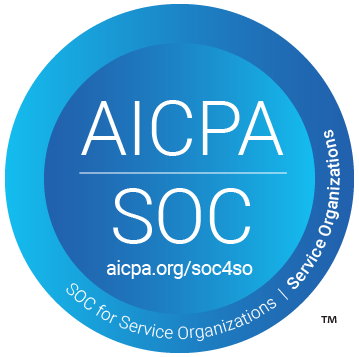Human-Centric Design isn’t about following steps or trends — It starts with people. With their worries, their goals, and how they move through the world. When teams pay close attention to what folks really need, things begin to shift.
Products stop feeling complicated, experiences start making sense. HCD is all about shaping solutions that actually work for humans. And when companies embrace that mindset, real change happens.
Curious to see how? Keep reading!
What is Human-Centric Design?
Human-Centric Design is a design method that puts people at the center of everything. It begins by understanding how people think, feel and behave. Those insights guide each decision along the way.
The result? Solutions that feel natural to use.
Instead of building around systems or specs, teams build around users. They listen, observe and learn. Feedback isn’t an afterthought; it’s a core part of the process. This makes it easier to create digital tools that are useful, welcoming, and easy to adopt.
Why is Human-Centric Design important?
Human-Centric Design matters because it starts with what people actually need — and keeps that in focus the whole way through.
When teams connect with users early on, they’re less likely to waste time building the wrong thing. It cuts down on rework, makes the experience smoother, and creates a real sense of connection.
When something feels right, people trust it — and that’s what makes it stick.
The principles of Human-Centric Design
Human-Centric Design is all about keeping things clear and meaningful. A few core ideas shape the way teams think and work, helping them adapt without losing focus. These principles aren’t rigid rules — they’re like signposts that keep everyone aligned with what really matters.
When design is thoughtful, it feels easy, intuitive, and made for real people.
Empathy
Empathy means taking time to understand others without assumptions. It’s about noticing how people react, what they struggle with, and what they need most. Design becomes more honest that way.
When teams practice empathy, they stop designing from a distance and start connecting with real pain points and aspirations. This makes the entire process more grounded. It’s not about guessing what works — it’s about listening, watching and learning from what’s already there.
Collaboration
When different minds come together, ideas grow. Designers, developers, researchers, and users share knowledge. The result is richer and more complete than anything one person could build alone.
Collaboration goes beyond meetings or brainstorms. It’s about creating safe spaces where all voices count. With more perspectives at the table, blind spots shrink. And when everyone contributes to the outcome, the solution becomes more than a deliverable — it becomes shared success.
Inclusion
People are different, and good design reflects that. Inclusion opens space for all voices and all realities. That’s how products become more fair, more useful and more human.
Inclusive design sees diversity as strength. It considers how age, ability, culture, and context affect every touchpoint. When teams design with inclusion in mind, they reach more people — and create digital experiences that are kinder, smarter and more relevant from the start.
Innovation
In HCD, innovation comes from looking closely at daily challenges. Instead of aiming for big breakthroughs, the focus is on fixing real problems in ways that feel new and smart.
Sometimes, the best ideas are the most obvious — a simpler flow, a clearer label, a faster click. This kind of innovation doesn’t shout. It blends in and supports users quietly, making their day smoother without them even noticing.
Iteration
Nothing is perfect from the start. That’s why HCD teams keep testing, adjusting and learning. Every version brings them closer to what people truly need. Iteration is more than refining screens — it’s about staying open.
Each test, each failure, each unexpected response is a step forward. Products become more mature, not because someone forced perfection, but because they evolved with real-world insight.
How does Human-Centric Design improve user experience?
Human-Centric Design improves user experience by focusing on what feels right for real people:
- interfaces become easier to use;
- information becomes clearer;
- the whole journey flows more naturally.
With user research as the foundation, teams uncover what works and what confuses. That clarity leads to better design choices. Tools get tested, not just launched. And when usability becomes a priority, frustration drops. Things start to click, both literally and figuratively.
What is the impact of Human-Centric Design on product and service development?
Human-Centric Design changes how products and services come to life. It shifts the focus from features to usefulness, from deadlines to relevance.
By talking to users, teams spot what matters before coding begins. That avoids waste and sets the right direction. The final product feels more connected to real-life needs.
That’s how companies improve adoption, reduce support issues and earn loyalty. Everything gets clearer, faster and more aligned.
How to implement Human-Centric Design in companies?
Implementing Human-Centric Design means changing how teams think and work. It starts by learning from users — through interviews, testing and real-world feedback. Then comes building and trying quick prototypes. Those get refined, based on what people say and do.
To keep HCD alive, companies need tools but, also, a culture that listens, that values insights, that believes small changes matter. From leadership to product squads, everyone plays a role.
The Ksquare Group helps companies put this mindset into practice. With experts in design, research and digital strategy, they turn human needs into smarter experiences. Curious to see how that works in real life? Click here to learn about their human-centered approach.
Summarizing
What is Human-Centric Design?
Human-Centric Design is a way of creating products or services by focusing on what people actually need. It involves listening to users from the start and building solutions that feel intuitive, useful, and meaningful in real life.
What is an example of a Human-Centric approach?
An app that’s designed with user feedback from the beginning is a good example. It prioritizes clear navigation, simple features, and real-world needs — so people don’t have to adapt to the product. The product adapts to them.
What does it mean to be human-centric?
Being human-centric means putting people first in every decision. It’s about understanding their needs, values, and context, and making choices that support real human experiences instead of just technical or business goals.
image credits: Freepik



